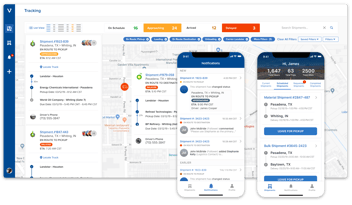Insights
Orchestration Agent: How AI Is Redefining Business Coordination Across Systems and Teams
Technology has long helped businesses overcome their biggest operational challenges—from connecting global supply chains to automating critical workflows. Yet as systems grow more complex, the real opportunity lies in orchestrating them seamlessly. That’s where a new class of AI innovation comes in: AI Business Agents that don’t just analyze data or assist with tasks, but actually coordinate work across systems, teams, and partners in real time.
At Chai, we’ve developed the Orchestration Agent to do exactly that. It brings together context, automation, and intelligence to manage coordination end-to-end—whether that means updating internal systems, confirming freight movements, or handling multilingual communication between global partners.
In the demo below, you’ll see how this Agent makes complex export workflows flow naturally. It listens, understands, acts, and reports back—freeing your team from manual coordination while ensuring every system stays in sync.
This is what orchestration looks like when AI becomes an active part of your operations.
Watch the Demo: Real-Time Intelligence in Action
The Orchestration Agent was built to handle what most automation tools can’t: dynamic, multi-system coordination. The demo shows exactly how it achieves this through four capabilities, but it can do more more things.
- Multilingual communication (00:40):
The Agent understands and responds in multiple languages, eliminating translation delays and reducing the need for third-party support. Whether your teams are in Houston, Hamburg, or Hong Kong, communication stays clear, contextual, and instant.
- Order accuracy (01:34):
AI automatically identifies and flags order inconsistencies that could cause delays in fulfillment or shipping. It’s proactive rather than reactive—catching potential issues before they become expensive errors.
- System updates (02:01):
The Agent updates enterprise systems in real time—ERP, CRM, or logistics platforms—cutting down manual data entry and ensuring every stakeholder has access to the latest information. It also recommends solutions based on client needs, helping teams make faster, better-informed decisions.
- Freight coordination (02:40):
By confirming shipments and pickups directly with freight forwarders, the Orchestration Agent prevents scheduling conflicts and eliminates back-and-forth communication. Every action taken is logged and synced, creating a transparent operational thread across the business.
Why It Matters: From Automation to Orchestration
While automation helps eliminate repetitive tasks, orchestration focuses on the bigger picture: how those tasks connect across workflows, departments, and systems. The Orchestration Agent represents that evolution, moving from process automation to process intelligence.
Traditional automation tools rely on rigid rules and workflows. The Orchestration Agent, however, adapts to context. It can interpret business logic, communicate with multiple systems simultaneously, and make decisions based on evolving data inputs.
This flexibility is transformative for global operations—especially in logistics, manufacturing, and supply chain management. Businesses gain not just faster execution but resilient coordination that scales with complexity.
By positioning the Orchestration Agent as an AI Business Agent, we’re emphasizing a future where software acts like a connected team member, communicating, problem-solving, and executing without human micromanagement.
The Rise of the AI Business Agent
The idea of AI Business Agents marks a shift in enterprise technology. Instead of deploying isolated automation bots, organizations can now implement specialized agents designed to understand context, collaborate across platforms, and execute business logic end-to-end.
The Orchestration Agent is part of this movement. It bridges the gap between systems—like CRMs, ERPs, and transport management tools—so they operate as one cohesive ecosystem. It doesn’t replace human decision-making; it amplifies it.
As enterprises adopt Agentic AI, these Business Agents will become the connective tissue between strategy and execution. They ensure that every part of the business—sales, service, supply chain, and operations—works together intelligently.
Connected Agents, Connected Business
At Chai, we’ve focused on three foundational technologies that can solve nearly any business use case and make Agentic AI adoption practical: Voice, Vision, and Search. Together, these capabilities form the foundation of an ecosystem designed to connect people, systems, and workflows seamlessly.
The Orchestration Agent builds on that foundation. It acts as the connective layer that coordinates these capabilities across business functions—bringing intelligence, context, and automation together in real time.
Each Agent in Chai’s framework is purpose-built to address a specific operational challenge:
-
Voice Agent: Enables natural, human-like communication for customer service and operations, allowing AI to engage, respond, and act in real time.
-
Vision Agent: Processes and interprets visual information to enhance inspections, maintenance, and decision-making.
-
Search Agent: Provides instant, contextual access to information across systems—turning data into insight when and where it’s needed.
These Agents are designed to work independently or together, enabling enterprises to scale Agentic AI across departments—without adding complexity.
Building a Human-Centered Future with Agentic AI
The real story is what happens when intelligence becomes part of the infrastructure that runs the business. The Orchestration Agent offers a glimpse of that future—AI that operates across systems, adapts in real time, and turns complexity into clarity.
At Chai, we see this as the next evolution of business itself—where Agentic AI moves beyond pilot projects to become a driver of core enterprise value. The organizations that embrace it early won’t just work faster; they’ll think faster, decide smarter, and scale further.
Explore more at heychai.ai.



